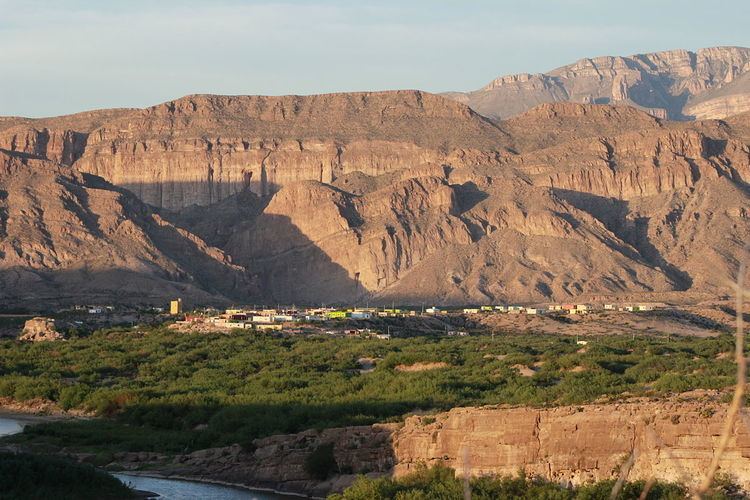Local time Monday 6:03 PM | ||
 | ||
Weather 31°C, Wind W at 10 km/h, 11% Humidity | ||
Boquillas del carmen drone flight
Boquillas (Boquillas del Carmen) is a small town in the Mexican state of Coahuila, on the banks of the Rio Grande (Río Bravo del Norte). It is a part of the municipality of Ocampo.
Contents
- Boquillas del carmen drone flight
- Map of Boquillas del Carmen Coahuila Mexico
- Boquillas del carmen coahuila mexico 2013 extrematour adventure travel
- Until 2002
- Border crossing closure and reopening
- Infrastructure
- References
Map of Boquillas del Carmen, Coahuila, Mexico
Boquillas del carmen coahuila mexico 2013 extrematour adventure travel
Until 2002
Efforts began in the 1930s to create a United States-Mexico International Peace Park in the area, joining Big Bend National Park with the Maderas del Carmen in Coahuila. Boquillas del Carmen would have been at the center of this proposed international peace park, but these efforts have not yet reached fruition.
Despite this inaction, Boquillas del Carmen cooperated with Big Bend in other ways. In the late 1990s, Boquillas was a small town of around 300 residents primarily dependent on the Big Bend tourist trade with visitors crossing the Rio Grande to visit the village's bar, restaurant, and taco stands. Children posted adjacent to the village's Christian mission sold rocks collected in the desert or from nearby caves. Tourism options included pony and donkey rentals, parties at Park Bar, and overnight stays at a local bed and breakfast known as the Buzzard's Roost.
Country music star Robert Earl Keen was known to have frequented Boquillas and released an album in 1994 entitled Gringo Honeymoon whose title track is said to be about a day he and a female companion visited the village.
Border crossing closure and reopening
The events of September 11, 2001, destroyed Boquillas del Carmen's traditional way of life. In May 2002, the border crossing from Big Bend National Park to Boquillas was closed indefinitely. As of October 2006, only 19 families of around 90 to 100 residents remained in Boquillas. Most of the town's residents had been forced to move away by the closure of the tourist crossing and destruction of the town's traditional economy.
On January 7, 2011, the US National Park Service announced plans to reopen the crossing using a ferry and a passport control center planned to open in the spring of 2012. After multiple delays, the new Boquillas Port of Entry was finally officially opened on 10 April 2013. The hours of operation currently are 9 a.m. to 6 p.m., Wednesday through Sunday, subject to seasonal changes. Since opening of the border crossing, the town of Boquillas del Carmen has seen substantial growth with the addition of electricity (brought over from the U.S. side), a new medical care office, and enhancements at the public elementary school. A single telephone line now comes into the village. When one calls that line, the operator states a specific time at which the caller should call back, promising him/her that the operator will find the person being telephoned and ensure that he/she is at the phone in order to receive the call at the appointed time. The village's population is now said to be about 200 persons. There are at least two restaurants/bars in the village and several curio shops (mostly bead craft work). One may not buy alcohol in Boquillas and bring it back to the U.S. via this entry point.
Finally, a somewhat self-deprecating statement told about the village by persons who live there. "Boquillas del Carmen has 200 people, 400 dogs and one million scorpions."
Infrastructure
In 2015 a solar farm was brought into operation, providing electricity throughout the village.
